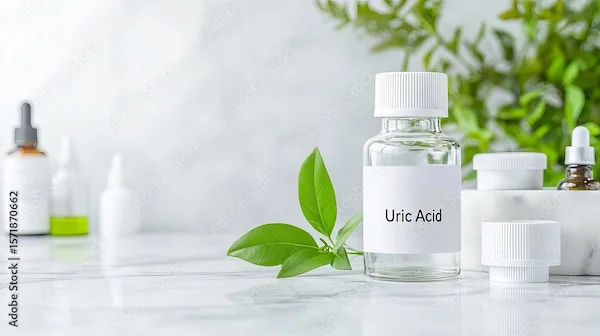Understanding Plasma Therapy: A Guide to its Types, Applications, Benefits, and Procedure
Learn about the science behind plasma therapy, its applications, procedures, benefits, and risks. Discover how this innovative treatment is transforming the healthcare sector.

Written by Dr.Sonia Bhatt
Last updated on 3rd Jul, 2025

Plasma therapy can refer to platelet-rich plasma (PRP) therapy or convalescent plasma therapy. It is a medical treatment involving the use of the plasma component of blood from the patient or a donor to treat diseases such as the Ebola virus and SARS-CoV-2 (COVID-19). Plasma, the liquid portion of the blood, contains essential proteins, antibodies, and nutrients that aid in healing and recovery. This therapy has gained significant attention for its role in treating infectious diseases, autoimmune conditions and other medical disorders.
What is Plasma?
As mentioned before, plasma is the liquid part of blood that carries blood cells throughout the body. It constitutes approximately 55% of the blood, making it its largest part. When separated from the rest of the blood, plasma is a light yellow liquid.
1. Composition of Plasma
Plasma is composed of:
Water: Plasma is about 92% water.
Salts: Plasma contains mineral salts like potassium and sodium.
Proteins: Plasma contains proteins like albumin, gamma globulin, and anti-haemophilic factors.
Other: Plasma also contains fats, sugars, vitamins, and hormones.
2. Functions of Plasma
The functions of plasma include:
Immunity: Plasma contains antibodies that help fight infection.
Blood Pressure and Volume: Plasma helps maintain blood pressure and volume.
Transport: Plasma carries nutrients, proteins, hormones, and waste products throughout the body.
pH Balance: Plasma helps in maintaining proper pH balance in the body.
How Does Plasma Keep Individuals Healthy?
Plasma is a crucial part of the treatment for many serious health issues, which has led to several blood drives asking people to donate blood plasma. Along with water, salt, and enzymes, plasma also carries important components, including antibodies, proteins, albumin, fibrinogen, and clotting factors. When an individual donates blood, healthcare providers can separate these vital parts from the plasma, which can then be concentrated into various products. These products are then used as treatments to help save the lives of people suffering from trauma, burns, shock, and other medical emergencies. The antibodies and proteins in plasma can also be used in therapies for rare chronic conditions such as autoimmune disorders and haemophilia. The treatments help people with these conditions live long and productive lives.
Mechanisms of Plasma Therapy
Understanding how plasma therapy works provides insight into its effectiveness and therapeutic potential.
1. How does Plasma Therapy Work?
Plasma therapy involves extracting plasma from a healthy donor or patient and administering it to individuals with medical conditions. The antibodies and proteins in plasma help boost immunity, reduce inflammation, and promote tissue repair.
2. Types of Plasma Therapies and their Applications
Below are the different types of plasma therapies:
Plasma Exchange (Plasmapheresis): Treats autoimmune diseases.
Convalescent Plasma Therapy: Used in infectious diseases like Covid-19.
Platelet-Rich Plasma (PRP): Applied in orthopaedics, dermatology and cosmetic procedures.
Applications of Plasma Therapy
The medical applications of plasma therapy include:
1. Use in Infectious Diseases and Pandemics
Plasma therapy has proven effective during pandemics, including the 1918 Influenza, SARS, and COVID-19 pandemics. Convalescent plasma from recovered patients provides antibodies to fight the infection. The use of plasma therapy during the COVID-19 pandemic highlighted its potential to provide immediate, albeit temporary, immunity to critically ill patients.
2. Applications in Autoimmune Disorders and Other Medical Conditions
Plasma therapy applications include:
Plasmapheresis is employed in managing autoimmune diseases like Guillain-Barré syndrome, lupus, and myasthenia gravis.
PRP therapy is widely used for osteoarthritis, tendon injuries, and skin rejuvenation.
Additionally, plasma therapy is used in haematology to treat haemophilia and other clotting disorders, neurology to manage conditions like multiple sclerosis, and cosmetic medicine for skin rejuvenation and hair restoration.
Plasma Therapy Procedure
The procedure of plasma collection from donors includes:
Donor Screening: Ensures the donor meets health criteria.
Plasma Collection: Blood is drawn, and plasma is separated via apheresis.
Storage: Plasma is frozen at -18°C for preservation.
The process of administering plasma therapy to patients includes:
Patient Assessment: Evaluates patient eligibility.
Plasma Fusion: Plasma is administered intravenously.
Monitoring: Observing for adverse reactions.
The infusion process typically lasts 1–2 hours. Post-infusion monitoring helps detect potential allergic reactions or other complications.
Benefits of Plasma Therapy
Plasma therapy has shown success in treating diseases such as Covid-19, chronic wounds and immune deficiencies. PRP therapy, for example, has shown positive outcomes in orthopaedic treatments. It can enhance tissue regeneration and reduce pain in chronic joint conditions.
Potential advantages of plasma therapy over other treatments include:
There are fewer side effects compared to some pharmaceutical treatments.
It can be sourced from the patient’s body, reducing the risk of rejection.
Non-invasive compared to surgical options.
Plasma therapy can also complement conventional treatments, which include providing a synergistic effect in managing chronic conditions.
Risks Associated with Plasma Therapy
Common side effects associated with plasma therapy include:
Allergic reactions such as itching and rash.
Mild fever and chills.
Fatigue and dizziness.
To manage symptoms, healthcare professionals monitor patients during and after plasma therapy with antihistamines or corticosteroids if needed. Additionally, comprehensive screening protocols and modern pathogen reduction techniques have significantly improved the safety profile of plasma therapy.
What are the Criteria for Donor Selection?
Criteria for donor selection include:
Age: 18–65 years.
Health Status: No infections or chronic illnesses.
Weight: 50 kg.
Recent Recovery: Donors must have recovered from the infection for convalescent plasma.
Eligibility of Patient for Receiving Plasma Therapy
Patients are evaluated based on:
Medical history and immune status.
The severity of the condition.
Absence of contraindications like allergic disorders.
Tests that check the Health of Plasma in the Body
There are several tests to check the health of a person’s plasma:
Bone Marrow Biopsy: The healthcare provider removes a sample of bone marrow to test for abnormal plasma cells.
Blood Volume Test: This test measures the amount of blood in the body.
Complete Blood Count Test: This provides information about the blood and overall health.
Plasma Protein Test: It helps identify the amount of plasma proteins in the blood.
Donating Plasma
Donating plasma is a process that involves separating the liquid part of the blood from the cells. It is similar to donating blood, but only the plasma is collected. Also, blood types are important for plasma transfusions. People with type AB are considered to be universal plasma donors.
1. How does it work?
A healthcare provider inserts a needle into a vein in an individual’s arm. Blood is then drawn into a machine that separates the plasma from the blood cells and platelets. The remaining blood components are returned to the body. Donated plasma is frozen within 24 hours and can be stored for up to one year. It can also be thawed and used for transfusions when needed.
2. Benefits of Donating Plasma
Donating plasma can help prevent stroke, heart attack, and other health diseases. It can also help cleanse the blood of bad cholesterol, reduce the risk of blood clots, and normalise blood pressure.
Conclusion
Plasma therapy remains a vital tool in modern medicine. It offers effective treatments for various infectious, degenerative, and autoimmune conditions. Plasma therapy’s applications extend beyond conventional medical boundaries, influencing areas like regenerative medicine and chronic disease management. The recent global pandemic highlighted the potential of plasma therapy in supporting recovery efforts. While ongoing research continues to explore its full capabilities, plasma therapy has already shown its effectiveness in numerous clinical settings.
Consult Top General Physician
Consult Top General Physician

Dr. Mohamed Azeem
General Physician/ Internal Medicine Specialist
2 Years • MBBS,MD(Internal Medicine) CCEBDM
Karaikudi
Apollo Hospitals Karaikudi, Karaikudi

Dr. Debashis Nayak
Endocrinologist
8 Years • MBBS, DNB (Internal Medicine), PG Diploma ( Diabetes & Endocrinology )
Rourkela
Apollo Hospitals, Rourkela, Rourkela

Dr. Aakash Garg
Gastroenterology/gi Medicine Specialist
12 Years • MBBS, DNB (Medicine), DrNB (Gastroentrology).
Bilaspur
Apollo Hospitals Seepat Road, Bilaspur
(125+ Patients)

Dr. Nirmal Mathew Alex
General Physician/ Internal Medicine Specialist
17 Years • MBBS, MD(general medicine)
Angamaly
Apollo Hospitals Karukutty, Angamaly
(50+ Patients)

Dr. Thirupathy K S
General Physician/ Internal Medicine Specialist
11 Years • MD
Karaikudi
Apollo Hospitals Karaikudi, Karaikudi
(75+ Patients)




